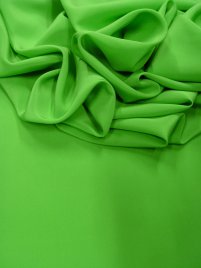- Home
- Resurrection ▾
-
Learn ▾
- Free library
- Glossary
- Documents
- Initiation
-
Shaped fabrics
- Introduction
- Popularization
- Definitions
- Le métier de façonné
- Principes du façonné
- Mécaniques de façonné
- Le jeu des crochets
- Les cartons
- Chaîne des cartons
- Mécanique 104 en détail
- Pour en finir
- Montage façonné
- Empoutage 1/3
- Empoutage 2/3
- Empoutage 3/3
- Punching, hanging and dip
- Autres façonnés
- Façonnés et Islam
-
Cours de tissage 1912
- Bâti d'un métier
- Le rouleau arrière
- Les bascules
- Formation du pas
- Position de organes
- Mécanique 104 Jacquard
- Fonctionnement 104
- Lisage des cartons
- Le battant du métier
- Le régulateur
- Réduction et régulateur
- Mise au métier d'une chaîne
- Mise en route du métier
- Navettes à soie
- Battage
- Ourdissage mécanique
- Préparation chaînes et trames
- Equipment ▾
- Chronicles ▾
- Fabrics ▾
- Techniques ▾
- Culture ▾
- Language ▾
Its elasticity comes from the fact that the weft, which is strongly mounted (retorse), is woven with two shuttles passed successively, one of which contains a weft mounted by a right twist and the other by a left twist.
As the warp, as well as the warp, is of a raw nature, this fabric, after its manufacture, passes to decay, for before this operation it produces no elasticity, and it is only afterwards that The cooking, which the contrariety of the two twists of the chain causes them to tend to crease, and, consequently, operate on the side of the fabric, a bubbling so sensitive, that to obtain a handkerchief in which square shawl, In length only 5/6 of the width, ie if, for example, the fabric is mounted on a width of 1m80, we will weave only 1m50.
From what we have just said of this fabric, it is only a question of elasticity over the width. Until this day (1848), the crepe of China has been made, in relation to the application of the twists, to that which has just been shown for the weft, for the chain in this fabric is of a single twist , Right or left.
Since, by means of the two frames, one of which is twisted in a straight line and the other left twist, passed successively, an elasticity is obtained in the cross-section of the fabric, which is done in the same manner with respect to the chain , In order to obtain over the length the same result obtained over the breadth? In order to attain this object, we see no obstacle which prevents the chain, instead of being a single twist, from being woven by a right twisted thread and a left twisted thread, Exactly the same reduction and the same nature as the weft, and combined in the same manner for the twist. Everything leads us to believe that by these various combinations the elasticity will be reproduced in one sense as well as in the other.
Crepe of China
The true crepe of China is always of silk, and is the only fabric (we speak of silk) which obtains a great elasticity: it can be indistinctly woven either in plain or in fashion. This fabric, whose name says the origin, is of an invention as simple as it is easy. The first ones were made in France, were made at the time when the Jacquard mechanics took birth.
